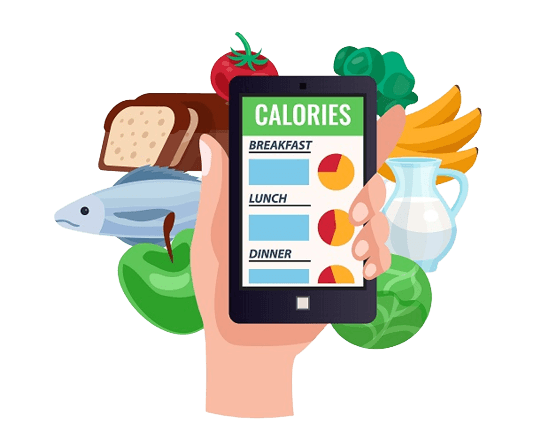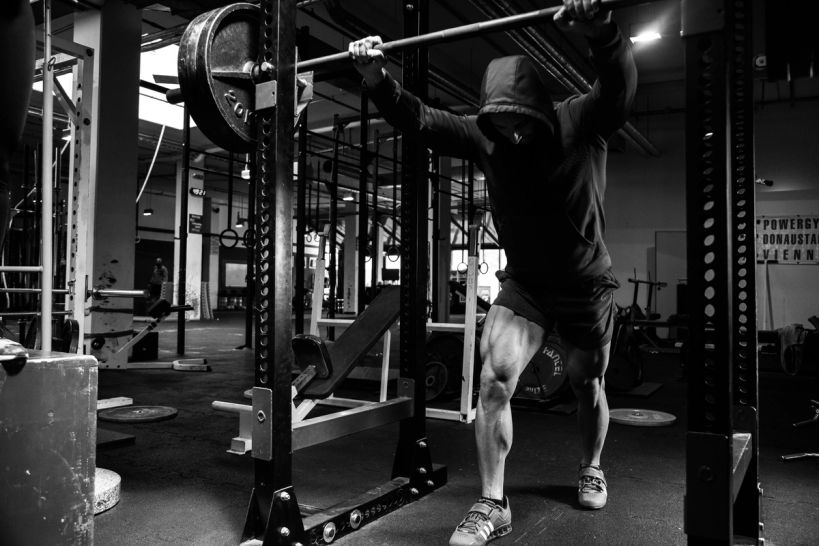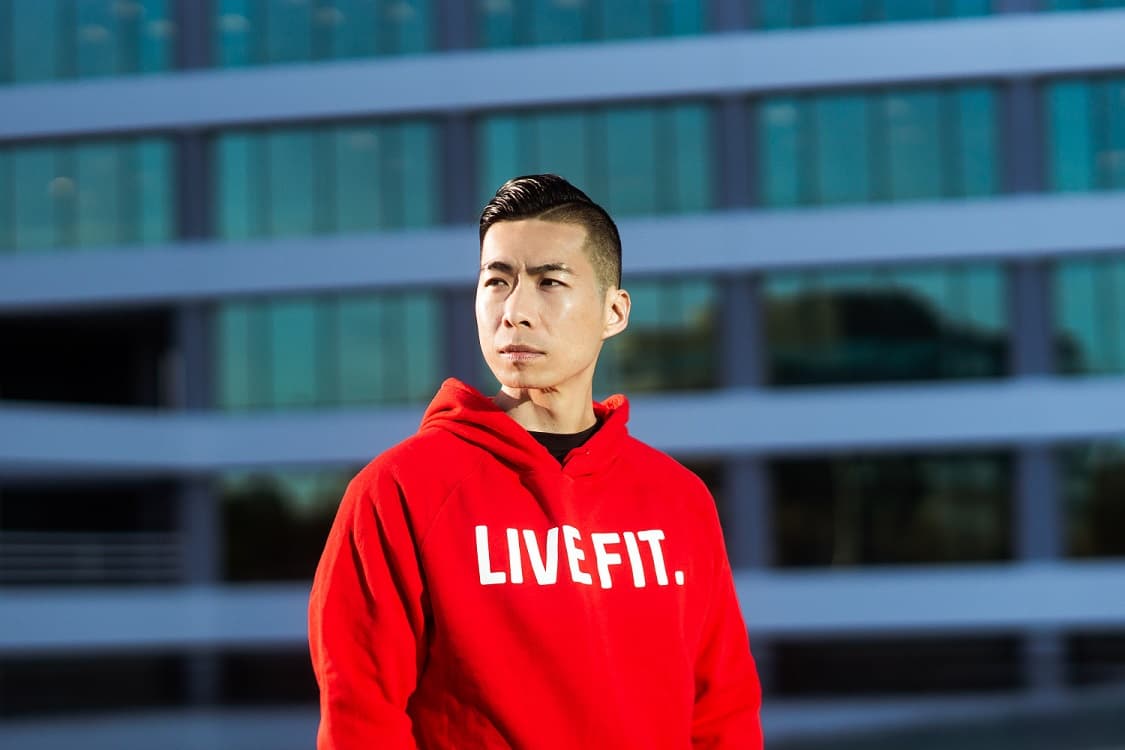6 Pack ABS in 30 Days!
Introduction to 6 Pack ABS in 30 Days
Do you dream of having a chiseled midsection that turns heads wherever you go? Well, you're not alone. The desire for a toned and defined six-pack is something many people strive for. Whether it's the allure of looking great at the beach or the confidence boost that comes with having a strong core, achieving visible abs is a goal that holds great appeal. However, one of the biggest challenges individuals face when it comes to obtaining those coveted six-pack abs is the daunting task of doing so within a short timeframe. Let's face it – we live in an era where instant gratification is king. We want results fast, and we want them now. The reality is that developing six-pack abs in just 30 days can be quite challenging. It requires dedication, discipline, and consistency in both your workout routine and nutritional habits. But fear not! While it may be an uphill battle, it's not an impossible feat. By following the right strategies and putting in the effort, you can make significant progress towards achieving your dream midsection.
The desire for a toned and defined midsection
We all yearn for a well-defined midsection because it symbolizes fitness and strength. Not only does having six-pack abs enhance your appearance, but it also serves as evidence of your commitment to leading a healthy lifestyle. A toned midsection exudes confidence and attracts attention from both genders. It acts as a visual testament to your hard work at the gym and reflects positively on your overall fitness level. Moreover, having strong abs goes beyond aesthetics; it plays a vital role in improving posture, stability, and core strength – essential components for various physical activities.
The challenge of achieving visible abs in a short timeframe
While the dream of obtaining six-pack abs is undoubtedly desirable, it's important to acknowledge the inherent challenges of achieving this goal within a restrictive timeframe. The road to visible abs is paved with hard work and dedication. It requires addressing two key factors: reducing overall body fat percentage and building well-defined abdominal muscles. These tasks take time, as they necessitate consistent effort in terms of both exercise and nutrition. Additionally, genetics play a role in how visible your abs may be. Some individuals naturally carry more fat in their midsection, making it harder for their abdominal muscles to show through even with diligent training and nutrition. However, this doesn't mean that achieving visible abs is impossible - it just means that you may need to put in extra effort compared to those blessed with more favorable genetic predispositions. So, the challenge lies not only in adhering to a strict routine but also in managing our expectations. Understanding that developing six-pack abs within 30 days requires discipline and perseverance will help you navigate the journey more effectively.
Anatomy of the Abdominal Muscles
When it comes to achieving those coveted six-pack abs, it's essential to understand the anatomy of the abdominal muscles. The primary muscles responsible for that chiseled midsection are the rectus abdominis, external obliques, and internal obliques. The rectus abdominis—or what we commonly refer to as the "six-pack"-is a pair of long, flat muscles that run vertically down the front of your abdomen. These muscles are divided by tendinous intersections, which create that distinct six-pack appearance. On either side of your abdomen are the external and internal obliques. The external obliques run diagonally from your lower ribs to your pelvis, while the internal obliques lie beneath them and run in an opposing diagonal direction. Together, these muscles allow for twisting and rotating movements while also providing stability.
Differentiating Between Upper and Lower Abs
Contrary to popular belief, there is no direct way to specifically target either your upper or lower abs through exercise alone. The rectus abdominis is one long muscle that contracts as a whole. However, certain exercises may place more emphasis on different regions of this muscle. The upper portion of the rectus abdominis is often more visible because it tends to have less fat covering it. This area can be targeted through exercises like traditional crunches or reverse crunches where you bring your knees towards your chest. The lower abs are notorious for being more stubborn when it comes to definition due to higher fat storage in this region. Effective exercises for targeting this area include leg raises and bicycle crunches.
Importance of Overall Body Fat Percentage
No matter how strong or well-defined your abs are, they won't be visible if they're hidden beneath layers of body fat. This is why achieving a low overall body fat percentage is crucial for unveiling those abs. To reduce your body fat percentage, you need to create a caloric deficit by consuming fewer calories than you burn. A combination of a healthy diet and regular exercise can help you achieve this goal. Engaging in cardiovascular activities like running, swimming, or cycling can help burn calories and increase your metabolism. Additionally, incorporating strength training exercises into your routine can promote muscle growth and boost your metabolism even further. Remember, everyone's body is different, and genetics play a role in how visible your abs will be. So don't get discouraged if the process takes longer than expected. Be patient, stay consistent with your workouts and nutrition plan, and eventually, those six-pack abs will start to show!
Nutrition for Abs Development
Caloric Deficit to Shed Excess Body Fat
When it comes to developing those coveted six-pack abs, one of the key factors to consider is achieving a caloric deficit. In simple terms, this means consuming fewer calories than your body needs to maintain its current weight. By creating a calorie deficit, your body taps into its fat stores for energy, gradually reducing overall body fat percentage and revealing those abdominal muscles. To start off, calculate your daily caloric needs based on factors like age, gender, weight, and activity level. Once you have this number, aim to consume about 300-500 calories less than your maintenance level each day. This moderate caloric deficit ensures that you're losing fat steadily without compromising muscle mass or energy levels.
Macronutrient Balance for Muscle Growth and Recovery
While reducing overall body fat is crucial for visible abs, it's equally important to focus on muscle growth and recovery. Achieving the right balance of macronutrients - carbohydrates, proteins, and fats - plays a significant role in fueling your workouts and optimizing muscle development. Carbohydrates provide the essential energy needed for intense workouts and help replenish glycogen stores post-exercise. Opt for complex carbohydrates like whole grains, fruits, and vegetables while avoiding refined sugars. Proteins are the building blocks of muscles and aid in their repair and growth. Aim for lean protein sources such as chicken breast, fish, tofu, eggs or legumes in each meal. Healthy fats are essential not only for overall health but also for hormone balance which greatly impacts muscle growth. Include sources like avocados, nuts/seeds or olive oil in your daily diet but remember portion control since they are calorie-dense.
Specific Foods that Promote Ab Development
In addition to maintaining a caloric deficit and balancing macronutrients, incorporating specific foods into your diet can also aid in ab development. These foods typically possess properties that help boost metabolism, reduce bloating, and promote muscle definition. Firstly, prioritize high-fiber foods such as vegetables (especially leafy greens), whole grains, and legumes. Fiber aids in digestion by keeping you regular and prevents bloating, making your abs appear more defined. Next, include lean proteins like chicken breast or fish since they are low in fat but high in muscle-building amino acids. Additionally, consuming sources of omega-3 fatty acids like salmon or chia seeds can help reduce inflammation and support fat loss. Don't forget the power of hydration! Drinking enough water throughout the day keeps you satiated, aids digestion, and helps maintain optimal metabolic function. Aim for at least 8 glasses of water daily to support overall health and ab development. By focusing on a caloric deficit, balancing macronutrients appropriately, and incorporating these specific foods into your diet plan you'll be well on your way to achieving those desirable six-pack abs. Remember to consult with a healthcare professional or registered dietitian for personalized advice based on your unique needs and goals.
Effective Ab Exercises for Quick Results
Traditional Crunches and Their Variations
When it comes to sculpting those coveted six-pack abs, traditional crunches are a tried-and-true exercise. To perform a basic crunch, lie flat on your back with your knees bent and feet planted firmly on the ground. Place your hands behind your head or across your chest. Engage your core muscles and lift your upper body off the ground, aiming to touch your elbows to your knees. Lower slowly and repeat for a set of repetitions. To spice up this classic move, try incorporating different variations. One option is the reverse crunch, where you bring your knees in toward your chest while lifting your hips off the floor. This variation particularly targets the lower abs, helping you develop a more balanced midsection.
Adding Resistance with Weighted Crunches
If basic crunches have become too easy for you, it's time to level up by adding resistance! Grab a dumbbell or a weight plate and hold it against your chest or behind your head during crunches. The added weight challenges your muscles even more, leading to increased strength and definition in no time. Remember to choose an appropriate weight that allows you to maintain proper form throughout the exercise. As always, quality over quantity is key here – focus on executing each repetition with precision rather than rushing through them.
Incorporating Stability Balls for Increased Activation
Stability balls are not only great for improving balance but also fantastic tools for intensifying ab exercises. To work those abs effectively using a stability ball, lie back on the ball with it supporting the curve of your lower back. Perform similar crunch movements as you would on the floor or mat but with an added challenge of maintaining stability on an unstable surface. This engages not only the abdominal muscles but also recruits additional stabilizing muscles, making your workout more comprehensive and efficient.
Planks and Their Variations
Now, let's shift our focus to planks – a simple yet highly effective exercise for building core strength. The standard plank is performed by assuming a push-up position, but instead of resting on your hands, you rest on your forearms. Keep your body straight from head to toe, engaging your core muscles throughout the exercise.
Standard Planks Targeting Core Stability
In this variation of the plank, it's crucial to maintain proper form and alignment. Avoid sagging or raising your hips too high as it could reduce the effectiveness of the exercise. Aim to hold the position for 30 seconds initially and gradually increase the duration as you become more comfortable.
Side Planks to Engage Obliques
Side planks are excellent for targeting those often-neglected oblique muscles. Begin by lying on one side with your forearm directly under your shoulder. Stack your feet on top of each other or stagger them for stability. Lift your hips off the ground until your body forms a straight line from head to toe. This exercise primarily works the oblique muscles on the side you're lifting from while also engaging other core muscles for stability. Hold this position for 20-30 seconds before switching sides.
Dynamic Plank Exercises for Added Challenge
If you're looking to take planking up a notch, dynamic plank exercises are just what you need! Mountain climbers involve starting in a plank position and alternating bringing each knee toward the chest in a running motion. This not only enhances abdominal engagement but also elevates heart rate, contributing to overall fat burning. Pike planks are another dynamic variation where you begin in a high plank position and then lift up into an inverted V shape by lifting your hips toward the ceiling while keeping your legs straight. This movement recruits the entire core while also targeting the shoulders and hamstrings. By incorporating these variations into your ab workouts, you'll keep your muscles guessing and promote continuous progress in your quest for those enviable six-pack abs!
High-Intensity Interval Training (HIIT) Workouts
A. Benefits of HIIT for Fat Loss and Muscle DefinitionWhen it comes to getting those coveted six-pack abs in a short amount of time, incorporating high-intensity interval training (HIIT) into your workout routine can be a game-changer. HIIT is a form of cardiovascular exercise that involves alternating between intense bursts of activity and short rest periods. This style of training has gained popularity due to its ability to maximize calorie burn and promote fat loss while simultaneously building muscle definition. One of the key benefits of HIIT is its efficiency. Traditional steady-state cardio workouts, like jogging on a treadmill for an hour, may burn calories during the workout but have limited afterburn effect. On the other hand, HIIT stimulates excess post-exercise oxygen consumption (EPOC), causing your body to continue burning calories even after you've finished exercising. This means you'll be torching fat not only during your workout but also throughout the day. Another advantage of HIIT is its ability to preserve muscle mass while promoting fat loss. Unlike long-duration cardio sessions that may lead to muscle catabolism, HIIT workouts provide an ideal environment for maintaining lean muscle mass while shedding unwanted body fat. By engaging in short bursts of intense effort followed by brief recovery periods, you create metabolic stress that activates pathways responsible for muscle growth and strength development.
B. Sample HIIT Routines Targeting Abs SpecificallyHere are two sample HIIT routines specifically designed to target those elusive abs: Routine 1: Tabata Abs Blast 1. High Knees: Perform high knees at maximum effort for 20 seconds, followed by 10 seconds of rest. 2. Mountain Climbers: Get into a plank position and alternate bringing each knee towards your chest as if climbing a mountain for 20 seconds, followed by 10 seconds of rest. 3. Bicycle Crunches: Lie on your back, bring your opposite elbow to meet the opposite knee while extending the other leg out straight. Repeat for 20 seconds, followed by 10 seconds of rest. 4. Russian Twists: Sit on the ground with your knees bent and feet lifted off the floor. Twist your torso from side to side while holding a weight or medicine ball for 20 seconds, followed by 10 seconds of rest. Repeat this circuit for a total of four minutes. Routine 2: Cardio Core Circuit 1. Jumping Jacks: Perform jumping jacks at maximum effort for 30 seconds. 2. Plank Jacks: Start in a high plank position and jump both feet out wide and back together for 30 seconds. 3. Leg Raises: Lie flat on your back and lift both legs up towards the ceiling until they form a right angle with your body, then lower them back down without touching the ground for 30 seconds. 4. Russian Twists: Sit on the ground with your knees bent and feet lifted off the floor. Twist your torso from side to side while holding a weight or medicine ball for 30 seconds. Rest for one minute and repeat the circuit three more times. Remember, during these HIIT workouts targeting abs, it's crucial to maintain proper form and engage your core muscles throughout each exercise. Always listen to your body and modify exercises as needed to avoid injuries. By incorporating these sample HIIT routines into your fitness regime a few times per week, you'll be well on your way to those chiseled abs you've been dreaming of within just 30 days!
Recovery, Rest, and Injury Prevention
When it comes to achieving those coveted six-pack abs, it's easy to get caught up in the grind of intense workouts and forget about the importance of rest and recovery. Rest days are not a sign of weakness but rather a crucial component in muscle recovery and growth. Giving your body time to rest allows your muscles to repair themselves from the micro-tears caused by exercise, ultimately leading to greater strength and definition. So make sure to schedule regular rest days into your fitness routine.
Importance of rest days in muscle recovery
During intense workouts targeting your abs, your muscles undergo stress and fatigue. Without adequate rest, they won't have sufficient time to heal, which can impede progress or even lead to injury. By incorporating regular rest days into your training plan, you provide your muscles with the opportunity to repair and grow stronger. Rest days don't mean you have to sit on the couch all day; instead, engage in low-impact activities like walking or gentle stretching. This promotes blood circulation without adding excessive stress on your abdominal muscles. Remember that balance is key: listen to your body's signals and adjust accordingly.
Stretching exercises to prevent injuries
Stretching plays a vital role in preventing injuries during ab workouts by improving flexibility and range of motion. Before starting any abdominal exercises, dedicate some time for dynamic stretches targeting the core area. A few effective stretches include torso rotations (standing with feet shoulder-width apart while twisting side-to-side), trunk extensions (lying face down while pushing up with arms), and cat-cow stretches (alternating between arching and rounding your back). These exercises warm up the muscles surrounding the abs while reducing tension that may lead to strains or pulls. Furthermore, incorporating static stretches for the abdominals post-workout helps to alleviate any tightness. Try exercises like seated forward bends, kneeling hip flexor stretches, or standing side bends. Remember to hold each stretch for at least 15-30 seconds and breathe deeply throughout.
Foam rolling techniques for post-workout recovery
Foam rolling is a self-massage technique that uses a cylindrical foam roller to release muscle tension and improve mobility. It is an effective way to enhance recovery after intense ab workouts and prevent muscle imbalances. For abs-specific foam rolling, lie on your stomach with the foam roller positioned under your midsection. Use your forearms to support your upper body and slowly roll back and forth, targeting the entire abdominal area. Focus on any tight or tender spots by pausing for a few seconds as you roll over them. In addition to the abdominal muscles, don't forget to roll out other areas that may indirectly impact your abs' performance, such as the hips, lower back, and glutes. By regularly incorporating foam rolling into your routine, you'll improve blood circulation and reduce muscle soreness—essential ingredients for a successful ab transformation.
7. Tracking Progress and Staying Motivated
A. Measuring body fat percentage changesWhen it comes to sculpting those enviable six-pack abs, tracking your body fat percentage is crucial. While weighing yourself on a regular scale can give you a general idea of your progress, it doesn't account for changes in muscle mass and water retention. Body fat calipers or handheld devices are handy tools that allow you to measure your body fat percentage accurately. To use body fat calipers, simply pinch the skin at specific points on your body, such as the triceps or abdomen, and measure the thickness of the skinfold with the caliper. By tracking these measurements over time, you can get a detailed understanding of how your body composition is changing as you work towards those washboard abs.
B. Documenting physical changes through progress photosSometimes, seeing is believing! Progress photos can be an incredibly motivating way to track your journey towards a chiseled midsection. Find a well-lit space in front of a mirror and take photos from various angles (front, side, and back) every few weeks. Comparing these images over time will reveal subtle changes in muscle definition and overall physique that may not be immediately obvious day-to-day. Plus, visually witnessing the transformation can provide an immense boost of motivation when you feel like skipping that workout or reaching for a bag of chips.
C. Utilizing fitness apps or wearable devicesWith technology at our fingertips, it's easier than ever to stay motivated and track progress through fitness apps and wearable devices. These tools offer features like workout tracking, goal setting, nutrition logging, and even social communities where you can find support from like-minded individuals. Fitness apps such as MyFitnessPal or Fitbit allow you to input your daily food intake while also monitoring calorie burn during exercise. They provide valuable insights into your nutritional intake and expenditure, helping you stay on track with your goals. Wearable devices like fitness trackers or smartwatches can also provide real-time feedback on heart rate, steps taken, and calories burned. Having this information readily available helps you stay accountable and adjust your activities accordingly. Plus, many of these devices offer reminders to move throughout the day, keeping you active even during sedentary periods. Remember, utilizing these tools is not just about the data; it's about finding what works best for you in terms of motivation and accountability. Experiment with different options until you find the tracking methods that resonate with your personality and habits. Tracking progress is essential when working towards six-pack abs in a short time frame. By measuring body fat percentage changes, documenting physical changes through progress photos, and utilizing fitness apps or wearable devices, you'll have a comprehensive toolkit to keep yourself motivated and accountable throughout your journey to a sculpted midsection.
Frequently Asked Questions
Q: Can I really achieve 6 pack abs in just 30 days?
A: While it is possible to make significant progress in a month, it's important to manage your expectations. The development of abs depends on various factors such as your current body fat percentage, genetics, and overall dedication to a consistent fitness routine. However, by following a well-structured plan that includes targeted exercises, proper nutrition, and dedicated effort, you can certainly make noticeable advancements towards achieving those coveted 6 pack abs within the given timeframe.
Q: Do I have to do endless crunches?
A: Absolutely not! While crunches are an effective exercise for targeting your abdominal muscles, they are not the only option. In fact, there are numerous exercises that can engage your core in different ways such as planks, leg raises, Russian twists, and bicycle crunches. By incorporating a variety of exercises into your routine and focusing on proper form and technique, you can effectively work your abs without getting bored or overworking specific muscles.
Q: Can I get 6 pack abs without dieting?
A: Unfortunately, diet plays a crucial role when it comes to revealing those toned abs. No matter how strong your abdominal muscles are if they're covered under layers of body fat. To achieve visible abs within 30 days or any timeframe for that matter, you need to create a caloric deficit by consuming fewer calories than you burn. This means being mindful of what you eat and making healthier food choices while ensuring an adequate intake of protein to support muscle growth and recovery.
Q: What if I miss a workout day?
A: Missing one workout day is not the end of the world! Remember that consistency is key but occasional setbacks happen to everyone. If you do miss a day, don't beat yourself up over it. Simply get back on track the next day and continue with your plan. It's important not to let one missed workout derail your progress. Remember, it's the overall effort and dedication that counts.
Q: Can I maintain my 6 pack abs after 30 days?
A: Absolutely! Once you have achieved those fabulous 6 pack abs, maintaining them will require ongoing effort. You can continue doing targeted ab exercises a few times a week to keep your muscles engaged and strong. Additionally, maintaining a healthy lifestyle by sticking to a balanced diet, incorporating regular cardio exercises, and managing stress levels will help you sustain your hard-earned results in the long run.
Conclusion
Achieving 6 pack abs in just 30 days is an ambitious goal that requires commitment and discipline. While it may not be attainable for everyone within that timeframe due to individual variations, following a structured plan focused on proper nutrition and targeted exercises will undoubtedly lead to significant progress. Remember to listen to your body, stay consistent with workouts and healthy eating habits while allowing yourself adequate rest and recovery time. Whether or not you achieve those perfectly chiseled abs within the designated time frame doesn't define your success or worth as an individual. Your journey towards physical fitness is unique, and every step forward is an achievement in itself. Stay motivated, celebrate small victories along the way, and remember that perseverance is key. Each day brings new opportunities for growth and improvement on this incredible path towards better health and self-confidence!
About The Author


Get your macronutrients breakdown
Fill out the form below to get a preview of your recommended daily calorie and macronutrient breakdown.

Why I Stopped Gaining Muscle (The Honest Truth)
Why I Stopped Gaining Muscle (The Honest Truth) The Importance of Gaining Muscle When it comes to health and fitness, gaining muscle holds a signifi...

Reverse Diet To Lean Bulk - Macros Included
Reverse Diet To Lean Bulk - Macros Included Introduction to Reverse Dieting Welcome, fitness enthusiasts! Today, we embark on an exciting journey in...



